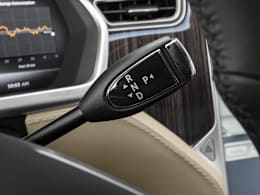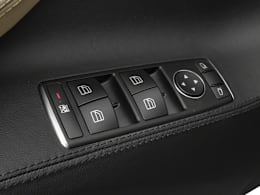The Tesla Model S is so revolutionary and advanced, it's like a car from another planet. That planet happens to be Silicon Valley, where this startup automaker has its headquarters and is run by the same CEO as Space X, the space exploration company with visions of flying to Mars.
The Model S requires no excuses -- electric car or not. That's why the Model S is the best-scoring car that we've ever tested, with the high-performance P85D variant scoring even higher.
And while you might expect a startup company to focus on acing a spec chart, the Model S gets the more subtle elements of motoring right: The Model S rides comfortably, it carves corners with military precision, stops on a dime, and is one of the quietest cars we've ever driven. And it's no one-trick pony, making for a practical family machine with seats for five adults plus two kids in an optional third-row seat.
All this, and it gets the equivalent of 87 mpg on electricity. The Model S also sets new standards for EV driving range and recharge times. Our P85D version could go between 180 and 210 miles on a charge, depending on the temperature, which is about twice as far as any other electric car. All this happens without burning a drop of gasoline or producing any tailpipe emissions. The cost of recharging the batteries is extremely low, as well.
And it can be charged in five hours with a dedicated Tesla connector. On a standard 240-volt connector, however, it can take about 12 hours. Even faster Tesla Supercharger stations are available on major highway routes, which can fill the battery to half its capacity in 30 minutes, all for free to owners.
Moreover, our car has delivered the energy equivalent of 87 mpg. With a full charge costing about $9 (at the national average of 11 cents per kWh), it's like running a conventional car on gasoline that costs $1.20 per gallon.
The Tesla rivets your attention from the start. Simply touching the flush aluminum door handles causes them to slide outward, welcoming you inside. With the car-shaped fob in your pocket or purse, a tap of the brake pedal brings the Model S to life. There's no need to insert a key, press a button, or even release the emergency brake. You're immediately greeted by the glow of a huge 17-inch video display that dominates the center of the dash and allows you to control everything from the suspension's ride height to Slacker internet Radio. And as you dip into the throttle, you experience a silent yet potent surge of power that will make many sports cars weep with envy.
As impressive as the Tesla is, its approximately 200-mile range, relatively lengthy charge times, and reduced cold-weather performance are still limitations. For longer jaunts, you'll have to plan ahead to avoid running out of juice.
Unlike most luxury cars, which are introduced fully realized, the Model S has been a work in progress. Current owners, and future buyers, benefit from frequent over-the-air updates. In the past, these have added traffic-based navigation, location-based air suspension adjustments, and calendar synching.
All this high-tech excellence doesn't come cheap, but tax rebates and a very low cost of operation absorb a bit of the sticker shock. A typical Model S with the 90-kW battery costs over $90,000. All-wheel drive adds $5,000. The performance-biased P90D passes $125,000 with typical equipment.
But some omissions pertain to hardware. Some luxury options, like a heated steering wheel and ventilated seats, are missing in action. Tesla's Autopilot is optional, which can add convenience but could potentially lull drivers into complacency. The system can automatically park the car on its own, retrieving it from its spot when desired. It can also monitor surrounding traffic and steer the car during lane changes, prompted by merely turning on the turn signal.These convenience features can help ease stress, but drivers must remain fully engaged with the driving process to remain safe.
While the Model S has been very successful, outselling most luxury car competitors, it still comes from a relatively new company.


























